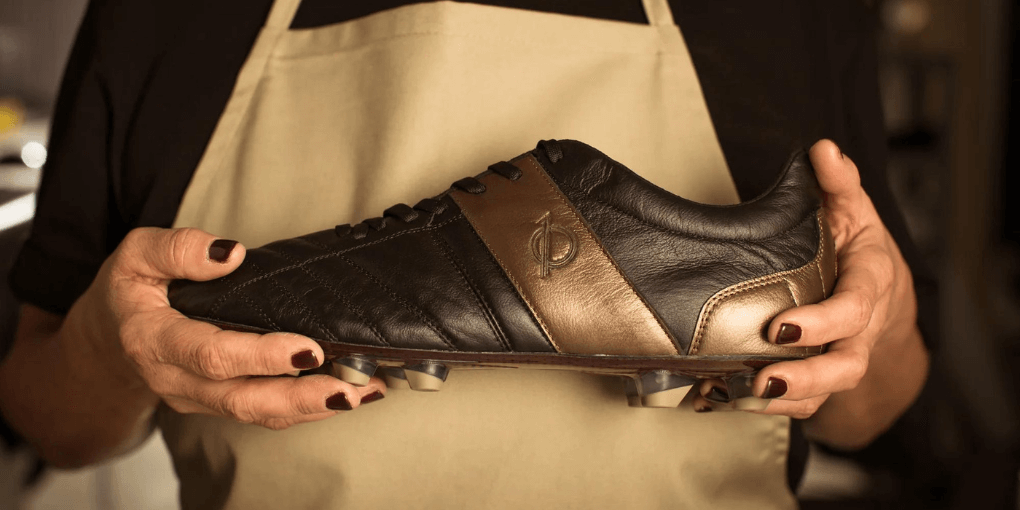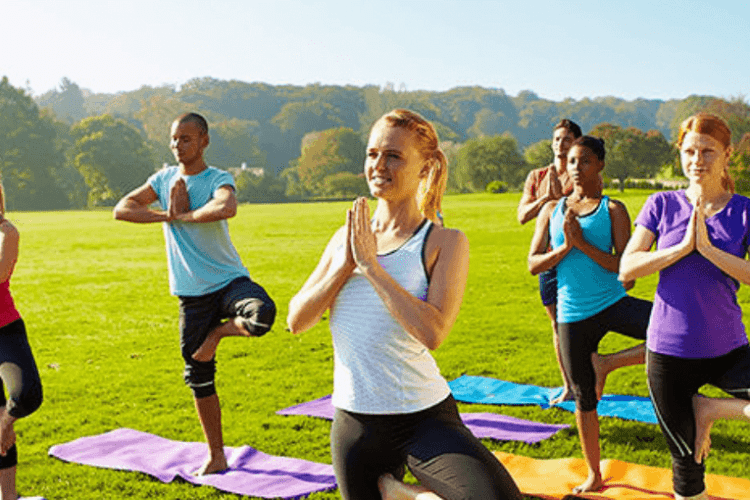The Influence of Sports Science on Soccer Cleat Development
Have you ever wondered why your soccer cleats make you feel like a superhero on the field? I have some exciting news to share with you!

We’re going to dive into the amazing world of soccer cleat development and discover how science helps make them great.
As a young soccer player myself, I’ve worn lots of different cleats. I’ve noticed that some are super comfy and make me feel great on the field, but others don’t. That’s where sports science comes in!
Sports science is changing the way cleats are made and helps you to perform at your best.
Soccer legend Cristiano Ronaldo once said that the right soccer cleats can make all the difference in how you play the game.
So, join me as I explore the world of sports science and its influence on cleat development. Let’s lace up these cleats and get ready to score some goals.
The Role of Sports Science in Soccer Cleat Development
Sports scientists combine science and soccer to create cleats that help you play your best and enjoy the game even more.
According to a study by the Journal of Sports Science and Medicine, modern cleats have reduced lower extremity injuries among soccer players.
- Study How You Move: Sports scientists try to observe how you run, jump, and kick. Through this, they want to understand your movements on the field. This helps them design cleats that support your action. As a result, it makes you more comfortable while playing.
- Testing Cleats for Performance: Scientists test cleats in labs and on the field. They want to see how well they help you run fast, kick accurately, and turn quickly. By studying these tests, they can make improvements to create better cleats for you.
- High-Tech Materials: Sports scientists use lightweight fabrics and cushioning to make cleats more comfortable. They also use special materials to make cleats more durable. These materials help you feel light on your feet and protect you from getting hurt during games.
- Cleats for Different Surfaces: Cleats are made to match different playing surfaces, like grass, turf, or indoor courts. Sports scientists study the best stud shapes and patterns. Their main aim is to give you good traction and grip on all types of fields.
- Focus on Safety: Making sure you stay safe is a big part of sports science in cleat development. Cleats are designed to support your feet and ankles. It also reduces the risk of injuries like sprains or strains.
- Cleats for Different Players: Sports scientists design cleats that match different players’ needs. Cleats for goalies, forwards, and defenders can help each player do their best on the field.
Role of Biomechanics in Performance Enhancement
Biomechanics is like having a secret weapon hidden in your soccer cleats. It guides you to move, play, and shine on the field.
Understanding How Your Bodies Move
Biomechanics helps scientists understand how your body moves when you play soccer. By studying biomechanics, they can figure out the best ways to design soccer cleats to make you run faster and kick stronger.
Making Fit Cleats
Biomechanics helps designers make cleats that fit your feet perfectly. This means you can run faster and kick the ball with more power and accuracy.
Studying the Science of Speed
Biomechanics helps you learn how to run faster on the soccer field. With the right cleats, you can pass your opponents quickly.
Keeping Your Feet Safe and Happy
Biomechanics helps scientists design cleats that keep your feet safe and happy. Cleats with good cushioning and support can prevent injuries. It makes you feel comfortable as you play.
Balancing Act on the Field
Biomechanics helps you understand how to balance better when you play soccer. Cleats with the right grip and weight distribution can help you stay on your feet and control the ball easily.
Cleats for Different Kinds of Fields
Biomechanics helps designers make cleats that work on different kinds of soccer fields. Cleats for grass, turf, or indoor courts can help you play your best wherever you are.
Impact of Soccer Cleat Development on Player Performance
Soccer cleat development can make a big difference in how well you perform during games. Let’s explore the impact of cleat development on your performance:
- Speed Boost: New cleat designs help you run faster on the field. Lightweight materials and improved traction make it easier to pass opponents and reach the ball quicker.
- Better Ball Control: Cleats with special features enhance your ability to kick and control the ball. Improved grip and support make it easier for you to dribble, pass accurately, and score goals.
- Reduced Fatigue: Modern cleats are designed to reduce fatigue. Enhanced cushioning and support also prevent foot pain and muscle strain. So, you can feel fresh and play your best throughout the game.
- Injury Prevention: Cleats that support proper foot movements can help prevent injuries. For example, twisted ankles or sprains. By providing stability and protection, well-designed cleats keep you safe on the field.
- Customized Fit: Cleats now come in various shapes and sizes to fit your feet comfortably. A customized fit reduces blisters and discomfort. It allows you to concentrate on your game without distractions.
- Enhanced Performance Metrics: Cleat technologies can track performance metrics during games. They include speed, distance covered, and impact forces. By analyzing these data, you can identify strengths and areas for improvement. This will enhance your overall performance on the field.
So, with the right cleats, you can run faster, control the ball better, and stay safe on the soccer field.
The Role of Technology in Soccer Cleat Development
ResearchGate found that technology in soccer cleat development has improved player agility and running speed. This shows how technology plays a vital role in helping players perform at their best on the field.
- 3D Printing: Technology like 3D printing allows you to create custom cleats that fit your feet perfectly. This means you can have cleats that match your feet’s shape and size. As a result, it helps you play better.
- Advanced Design Tools: Technology helps designers create cleats with special shapes and patterns that improve performance. These can enhance your speed, agility, and ball control.
- Track Movement: Cleats with sensors can track your movements on the field. This means you can analyze your performance and find ways to improve your game.
- Virtual Reality: This technology allows you to practice soccer skills in a virtual environment. This means you can train anytime and anywhere. So, you can improve your skills without the need for a soccer field.
- Smart Materials: Technology helps scientists create cleats with smart materials. It provides comfort and support for your feet. This means you can focus on playing your best without worrying about getting hurt or feeling uncomfortable.
- Customization: Technology allows you to create apps that help you customize your cleats. This means you can choose your favorite colors, add a name or team logo, and make your cleats unique.
- Environmental Sustainability: Cleat companies are using technology to create eco-friendly cleats. Cleat designers are using recycled materials and sustainable production methods. This reduces waste and promotes a greener future.
The Role of Data Analysis in Soccer Cleat Development
Data analysis plays a huge role in making cleats that help us play soccer better. Let’s explore its role in cleat development together:
Player Performance Insights
Data analysis helps scientists understand how you move and perform during soccer games.
By studying this data, they can identify areas to improve in cleats to enhance your performance.
Customizing Cleats
Data analysis allows scientists to create cleats that meet your needs and playing styles. So, you can get cleats that fit you perfectly and provide better comfort and support on the field.
Feedback from Wearable Technology
Cleats with sensors keeps track of how you move and what you do in games. This feedback helps scientists make cleats that help you be more agile, faster, and better at soccer.
Injury Prevention Strategies
Scientists use data to find the causes of common soccer injuries. They also study how different cleat designs affect these injuries.
This helps them make cleats that lower the chances of getting hurt and keep you safer on the field.
Improving Traction and Stability
Data analysis helps figure out the best ways to make cleats for different fields. Based on this analysis, cleats with better grip and stability make it easier for you to move on the field.
Enhancing Energy Efficiency
Researchers use data analysis to make shoes that help you not use too much energy when you run and move on the field. Shoes that help you not get tired too quickly can help you play better for longer.
Collaborations between Sports Science and Footwear Companies
Collaborations between sports science and footwear companies play a huge role in making cleats. In these ways, they help play soccer better:
- Sharing Knowledge: Sports scientists and shoe companies work together to make better soccer cleats. Scientists study how the body moves, and companies use this information to make cleats that help you perform better.
- Testing and Feedback: Scientists test how cleats impact your moves and play on the field. Shoe companies use this information to make better cleats that help you perform at your best.
- Innovative Technologies: They work together to come up with new ideas for cleats. They create cleats with new materials and special features. These help you run faster and play better.
- Customized Solutions: They together create cleats that fit each player’s foot perfectly. This means you can run and play without any discomfort and can perform at your best.
- Research and Development: Shoe companies invest in what scientists find out to make their cleats better. When they work together, they can make the best cleats for you to enhance your performance.
- Player-Focused Approach: When sports scientists and shoe companies team up, they focus on helping players like you. They want to make cleats that make you better, prevent injuries, and make the game more fun.
- Testing Cleats with Players: They test cleats with real players to see how they perform on the field. After getting feedback from players, they make improvements to make even better cleats in the future.
Conclusion
To sum up, sports science has really contributed to the evolution of soccer cleat development.
Research and innovations in sports biomechanics have led to better cleats.
As a result, you can now perform better, reduce injuries, and maximize your potential on the field.
So, lace up your cleats and hit the field with confidence. Let the magic of sports science drive you to new heights in the beautiful game of soccer.
FAQs
Cleats that fit well help you run faster, kick better, and control the ball like pros. They can also help you avoid injuries and feel more comfortable on the field.
Sports science helps scientists understand how athletes move and perform in sports. It studies players' movements and body mechanics to create better gear.
Cleats with better grip and support help you control the ball with accuracy. These cleats make the ball stick to your feet for perfect passes and powerful shots.
Each position has unique demands that require specialized features in cleats.
Yes! Cleats can protect you from getting hurt. They do this by providing stability and support for your feet and ankles.
With the right cleats, you can enjoy the game without worrying about twisted ankles.


